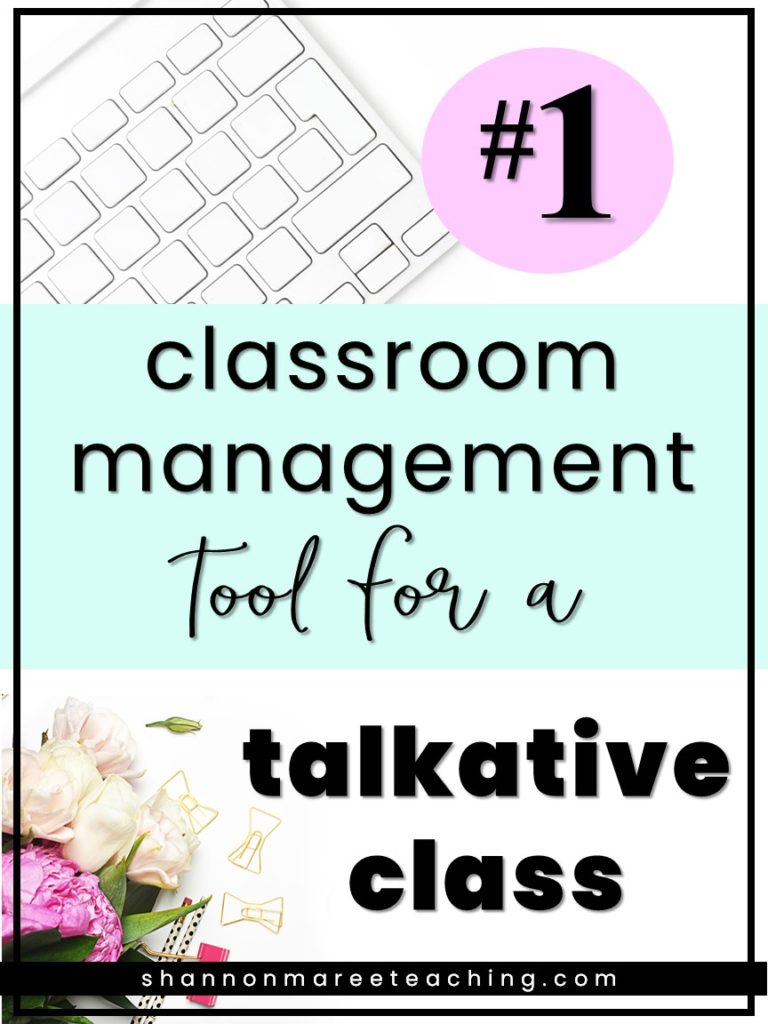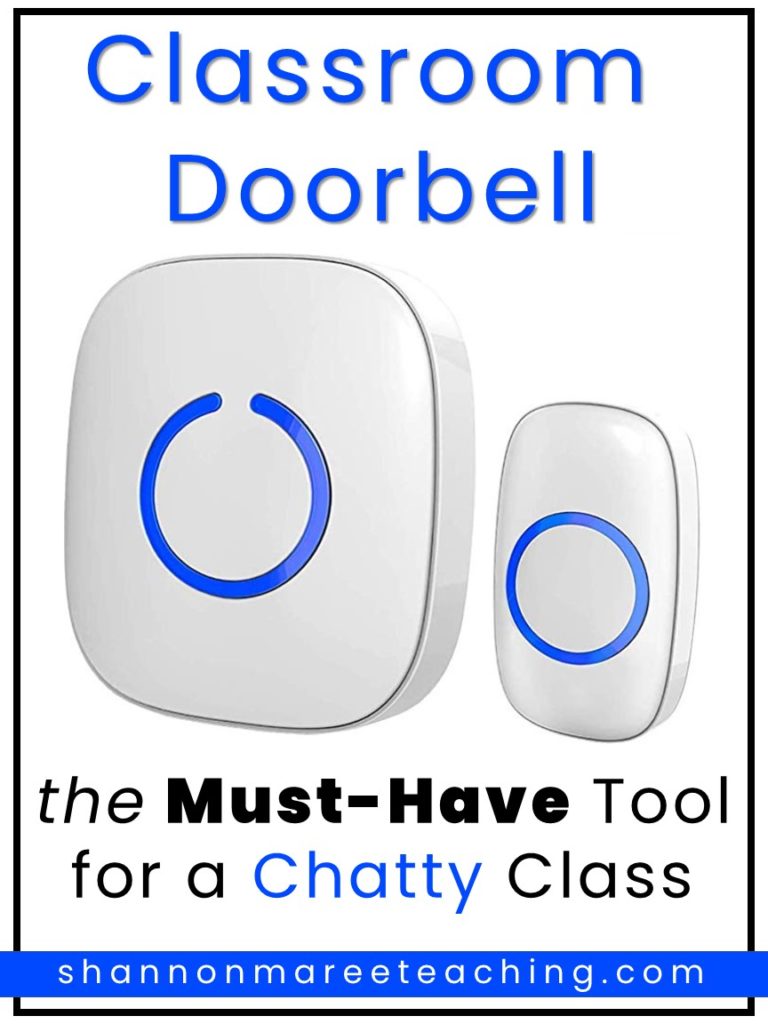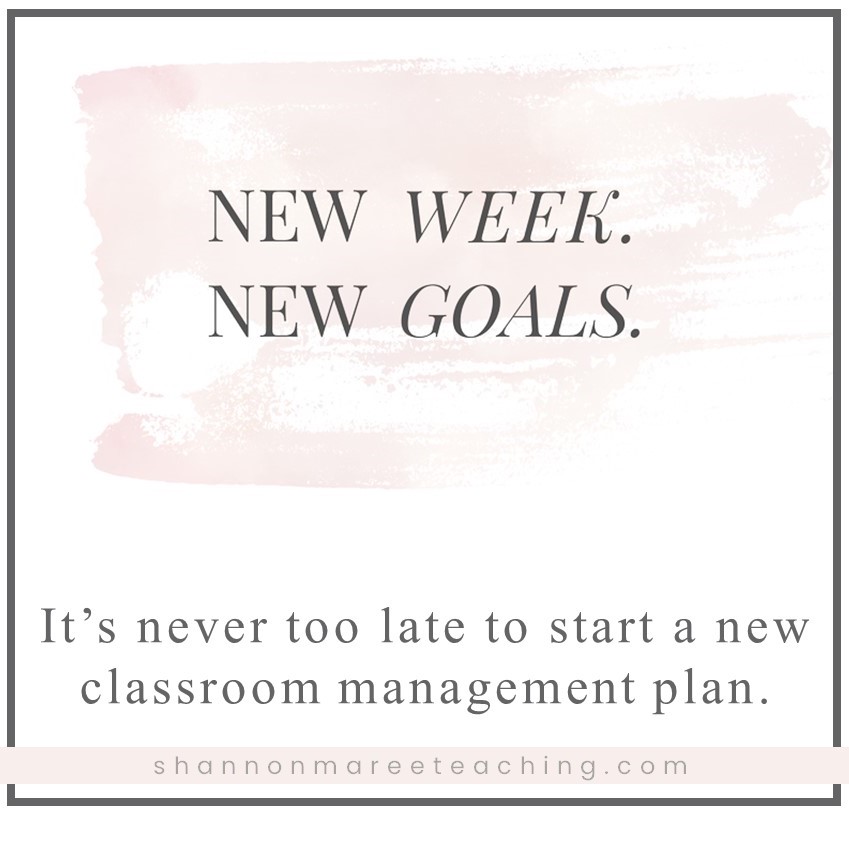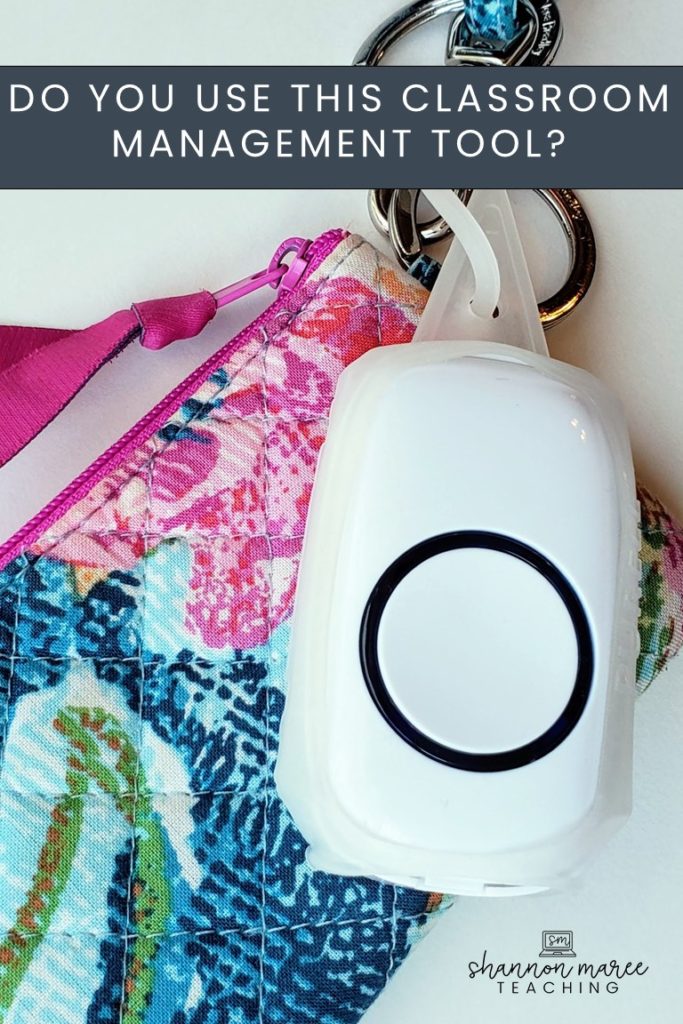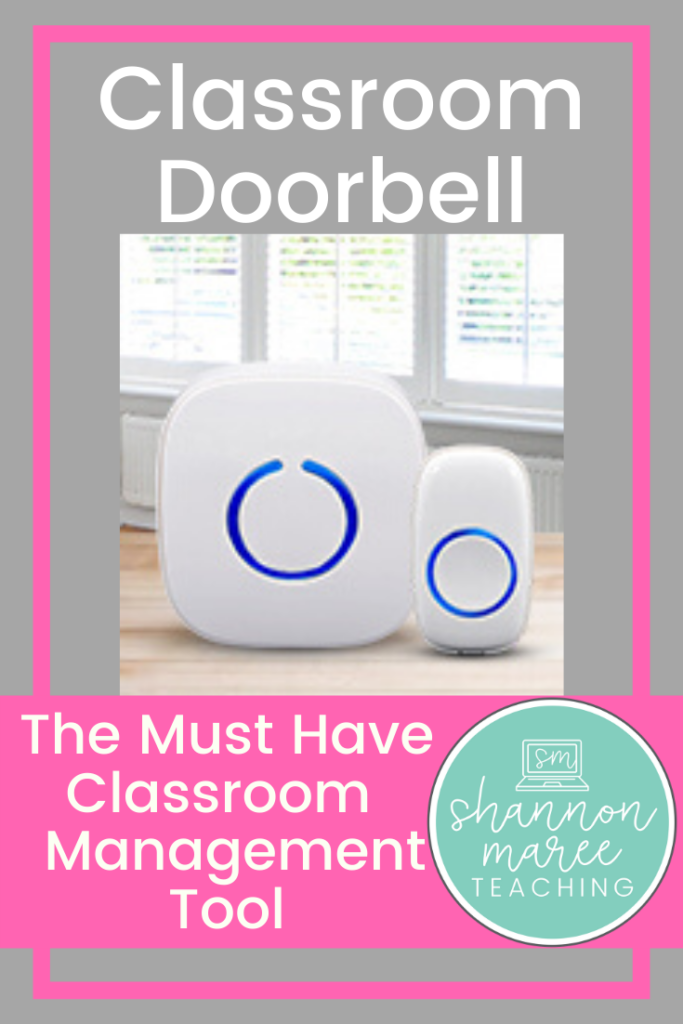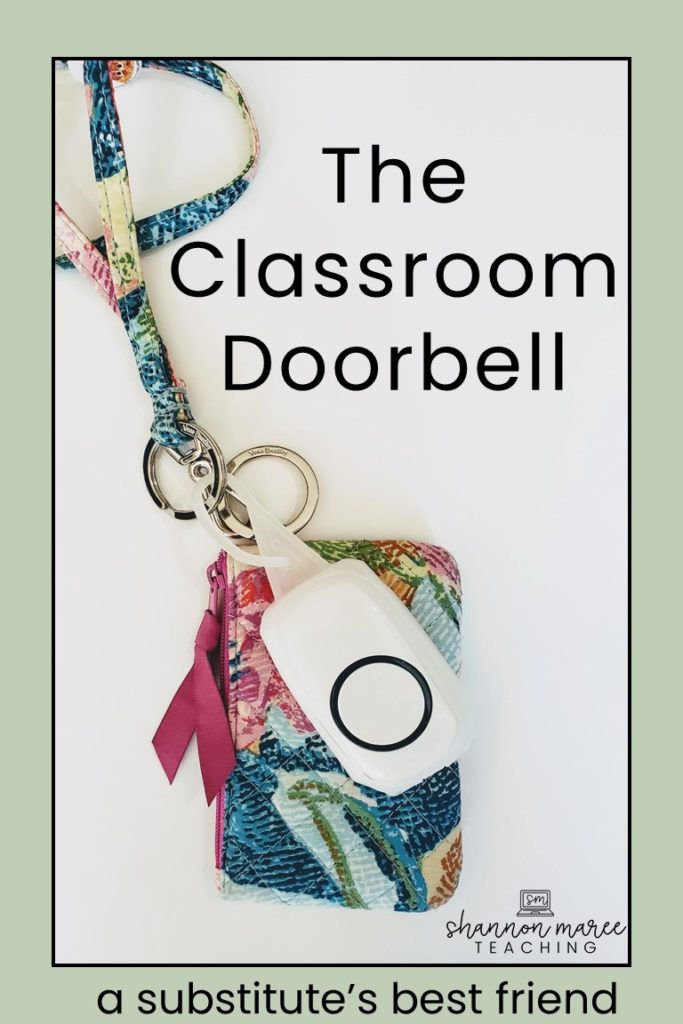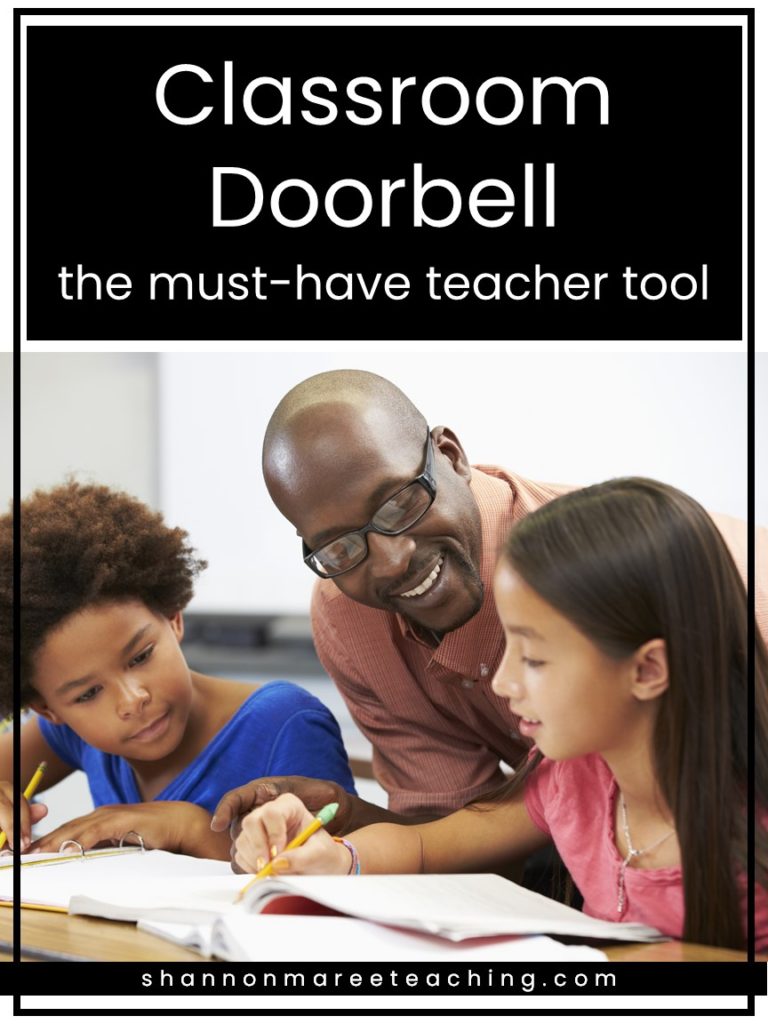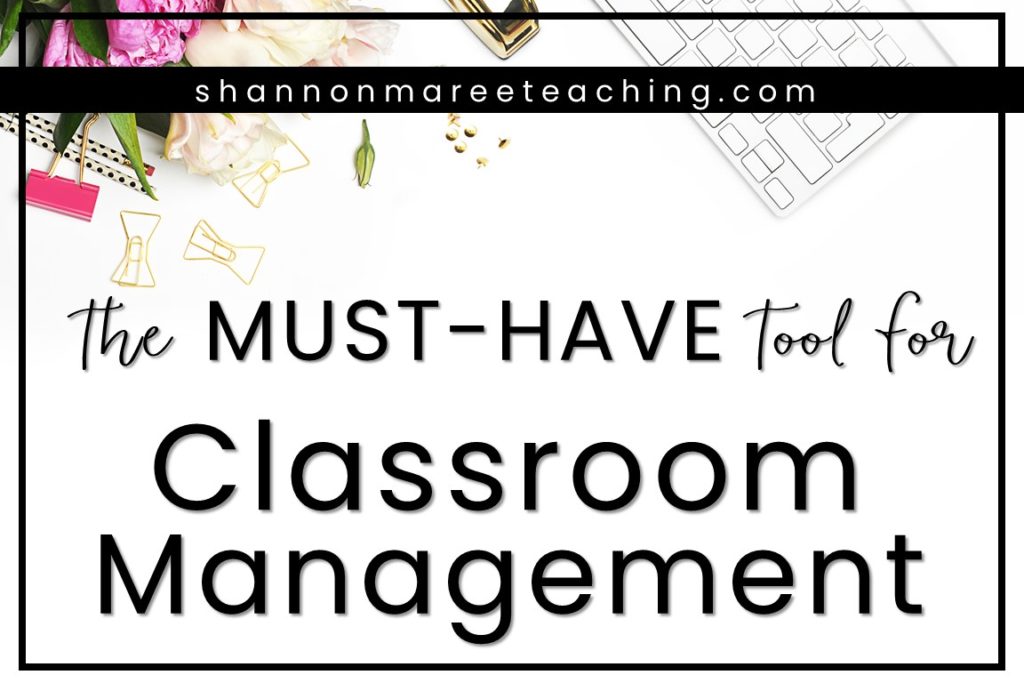
Classroom Doorbell – the MUST-have management tool!
Hey teacher friends! This easy peasy classroom management hack has been an amazing upgrade for our class, and I have to share it with you too!
If you’re tired of the constant chatter, repeated directions, or are just looking for a fun new tool like I was. Read on, I’ve got you covered. Using a classroom doorbell is super simple to use, takes less than 2 minutes to set up, and has a major impact on classroom behaviors.
What is a Classroom Doorbell?
In short, it’s a wireless doorbell that acts as an attention-getter in your classroom. I teach my students to listen for the sound, and when they hear it they know the chime is their signal to turn their attention to me. For me, that means quiet voice, quiet bodies, and eyes on the teacher.
As with any management system, it’s crucial that you introduce it and practice explicit instructions with your students. The classroom doorbell is loud enough for students to hear over their group work (personally tested with my chatty group of 29 kiddos), and you can be anywhere in the room when you press the wireless doorbell button (I wear it on my lanyard). If you’re on board with that, then adding a wireless doorbell to your classroom management toolbox is the answer you’ve been looking for.
It’s an affordable, easy, and fun tool that gets results. I hands down prefer it to the call back chants, clapping patterns, and transition routines I’ve used in the past.
My Classroom Doorbell
The classroom doorbell I ordered is from amazon, you can find it here: https://amzn.to/2AHY5wj. I like SadoTech’s version because it’s customizable and super easy to set up and use!
Classroom Doorbell – Setup
There is hardly any setup needed and you don’t need to be the least bit tech-savvy to use it. The classroom doorbell can go from box to calming the chatter in 2 minutes.
It’s called a classroom doorbell because it is a two-piece wireless doorbell that works exactly as you’d expect. Simply plug the sound piece into the wall, then the second piece is my go-to class attention-getter! It’s a wireless button that I press anytime I want the students’ attention. My button is attached to my lanyard via a gel hand sanitizer holder so I always have it with me.
There are no batteries required for the base (plugs into an outlet), and the button has batteries that come with it. My button battery is still going strong at 2 years and I can’t imagine teaching without it! The classroom doorbell has transformed our routines, classroom climate, and the best part is my students LOVE IT. Later on, I’ll share my favorite ways to create hype and buy-in from students to keep this classroom management tool relevant and fun all year long.
Student Introduction
On the first day, I’ll give the students an overview of our classroom doorbell, what it is, how it works, and why it’s oh so important that they listen for the sound. As a class, we play through the various sounds and vote on our favorite. Then comes a quick practice. We use the look, feel, sound model. I share with students that when they hear the chime we see students setting down their work and looking at the teacher. We should feel calm and focused, and we shouldn’t hear anything but the quiet hum of the fan. From their seats, we practice doing these 3 things, and I give feedback until everyone is on the same page.
It seems incredibly basic, but starting from the absolute beginning is a game-changer. Showing students that when they hear the bell it means to set their pencil down right away. It doesn’t mean finish reading the page, or adding one last paragraph to their writing. The same goes for talking and moving around the room. I love using this time to encourage students and pump up my kids about how great they’re doing.
Setting Expectations at the Beginning of the School Year
As with any classroom management tool, when introducing the classroom doorbell to your students you want to:
- be very specific
- give and model explicit instructions
- practice, practice, practice!
When it comes time to model, I show them first, then ask for a student volunteer. I always pick a student who might struggle to follow rules as it gives them more confidence. It’s also helpful later in the year because we can easily refer back to the moment when they showed the whole class the right way to do______. Once students have seen the expectations modeled twice we practice as a whole group.
Students will pair up and find a spot around the room and start working on a set of math problems posted on the board. As they find their spot I remind them to listen carefully for the chime. When they hear the chime students go through our steps of quiet voice, quiet body, and eyes on the teacher.
During practice, I always verbally praise students who I see meeting the expectations and give specific feedback (in general, no specific names) of what needs to be different. We practice until they’ve mastered it, then I give them a challenge. A simple and fun challenge is to time how long it takes the class to follow your directions. I’ll time them, post it on the board, then challenge them to beat the time. Sometimes I’ll make up a time and say it was my class’s best time last year, and then they really want to beat it. 🙂
Setting Expectations Mid-Year
If you stumbled across this blog post mid-year don’t worry, you can still implement a classroom doorbell! If what you’re doing is working, go you! Keep your classroom expectations the same, just help students know that instead of your usual call/respond they need to listen for the sound of the doorbell.
Wanting to start fresh mid-year? Treat it as if it were the first day of school and go back to the basics. Reteach your expectations, and when implementing still practice, build hype, pump the kids up about how great they’re doing. Giving small rewards (even verbal praise) for students who are responding quickly is an easy and effective way to encourage students who modeled the behaviors you want all students to follow.
Strategies for Classroom Management
Classroom management for elementary teachers is becoming increasingly difficult as class sizes continue to grow. It’s more important than ever that we have a diverse classroom management toolbox to pull from. The wireless doorbell is a go-to for me and I use it to help manage these areas of class:
- Transitions: lining up, moving to/from the carpet, switching subjects/rooms (specials/compartmentalized science and SS), walking in the hallway
- Small groups and 1-1 conferences: centers, rotations
- Recess/Lunch
Ways to Wear a Classroom Doorbell
The easiest way I’ve found to carry my classroom doorbell is to slip the clicker into a gel hand-sanitizer holder and keep it on my school lanyard. I use a simple clear case that held the sanitizer in my son’s diaper bag (ha!) but recently have seen super cute holders on both Amazon and Bath and Body Works. You could also hot glue the classroom doorbell to your ID case or lanyard.
Classroom Management with a Substitute
Personally, I love being able to take it off and leave it with the sub when I’m attending professional development or homesick. My students have done significantly better with subs when the classroom management system can stay consistent even when I’m not there. Plus, my substitutes love using it and leave notes of appreciation. It makes returning to school after a sub much easier.
Whether you or your sub are using the classroom doorbell, being able to wear the doorbell eliminates the hassle. No more having to search around the room for where you set it down last or always having to go to a certain location in the room to turn it on – it’s always available!
SadoTech has a ton of colors, so whether you a neutral fan or lover of all things bright, they’ve got you covered. Click the picture to see the options up close.
Tips & Tricks
No matter what your classroom management plan includes, you will always see greater success if the students buy into it. Kids want to do the right thing, and their excitement to do the right thing can be nurtured. I love building hype around my classroom management plan by:
- Changing the ringtone as a reward
- Set class challenges (length of time, how many times they can do _____, etc.)
- Letting students vote between 2 sounds
- Praising and commenting when I see students following through with what I’ve asked
- Telling my class what I love about them (being specific)
- Bragging on how hard they work to ____ (pick out specific parts of my management plan they do well) to their parents and other teachers when the students are around
READY TO TRANSFORM YOUR
CLASSROOM MANAGEMENT?
If a classroom doorbell sounds like your classroom management style, I’ve got you covered. Click here or the picture below to grab your own wireless doorbell. Whether you have a room full of chatty Cathy’s (sorry Cathy!), need a new tool to keep things interesting, or your voice needs a break…I can’t recommend this classroom management tool enough.
P.S. Are you looking for ways to cultivate a culture of kindness in your classroom? Eliminate disruptive behaviors? Help your students with social-emotional learning? I’ve got your answer! Check out this totally free teacher right here.

Another key aspect of classroom management is your classroom community. I love building a strong community between my students and myself. Click here to read a blog post about my FAVORITE way to build classroom community.
